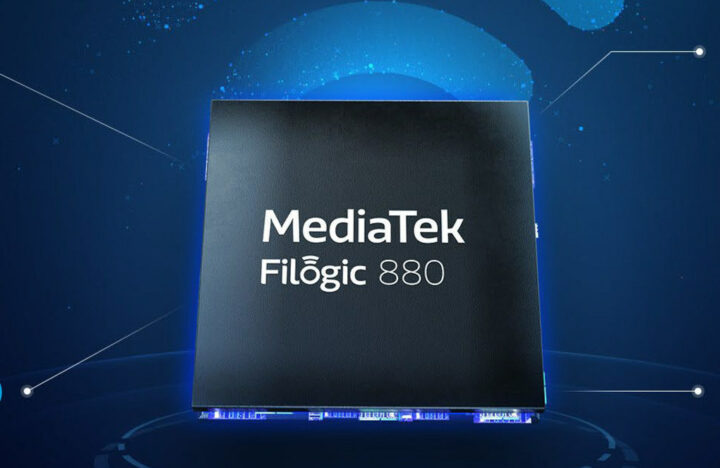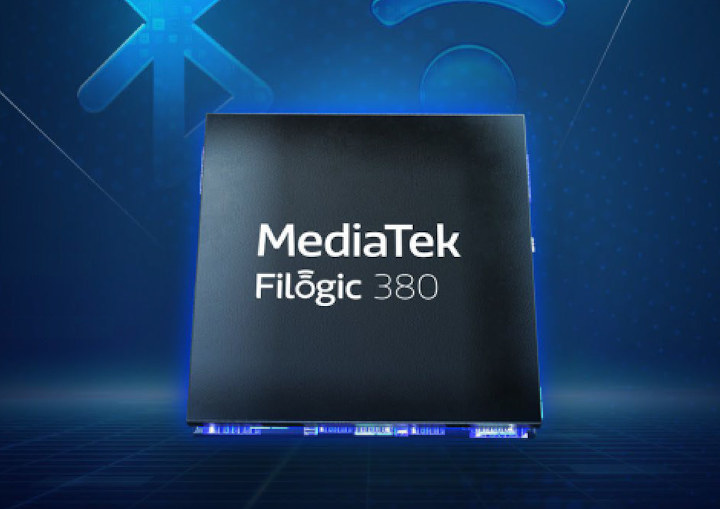I first heard about WiFi 7 (802.11be) when MediaTek demonstrated some unknown Filogic solutions to customers, but few details were known at the time. The company has now formally announced the Filogic 880 and Filogic 380 WiFi 7 solutions designed for access points and clients respectively.
MediaTek Filogic 880 for WiFi 7 access points, gateways, and routers
Filogic 880 specifications:
- CPU – Quad-core Arm Cortex-A73 application processor @ up to 1.8 GHz (about 30K DMIPS performance)
- AI accelerator – Advanced NPU (previously called “packet accelerator” or “off-load engine” :)) with HW NAT/IPv6 acceleration, QoS acceleration, (EIP-197) crypto engine for accelerating IPSec, SSL/TLS, DTLS (CAPWAP), SRTP and MACsec, etc…
- System Memory – Up to 8GB 32-bit DDR3/DDR4 3200
- Storage – SPI NOR flash, SPI NAND flash, eMMC flash
- Networking
- Wired
- 2x 10 Gbps Ethernet
- 1x 2.5 Gbps Ethernet
- 4x 1 Gbps Ethernet
- Wireless
- Wi-Fi 7 technologies such as 4096-QAM, 320MHz, MRU, Automatic Frequency Coordination (AFC), and MLO (Multiple Link Operation)
- Up to 10Gbps in one channel
- Up to penta-band 4×4 with a maximum speed of 36Gbps (BE36000 router)
- Support for OFDMA RU, MU-MIMO and MBSSID
- Wired
- USB – 2x USB 3.2 interfaces (5 Gbps each)
- PCIe – Multiple PCIe Gen 3.0 root-complex host controllers (10 Gbps each)
- Low-speed I/Os – UART, SD, SPI, PWM, and GPIO
The Filogic 880 processor will be used in routers, access points, and gateways in the operator (CPE), retail, and enterprise markets. MediaTek also claims it can deliver up to 100x lower latency against competing WiFi 7 solutions (which should be from Broadcom and Qualcomm), but IMHO that seems unlikely…
MediaTek Filogic 380 WiFi 7 and Bluetooth 5.3 client solution
Filogic 380 specifications:
- WiFi
- Baseband, MAC, RF receiver, and iFEM components
- WiFi 7 up to 6.5 Gbps
- Dual-band, dual-concurrent 2×2 functionality – 2×2 2.4 GHz + 2×2 5 GHz or 2×2 6 GHz
- Support for 4096-QAM, MLO, MRU, and MU-MIMO
- Support for 320MHz channel bandwidth
- Bluetooth
- Bluetooth 5.3 with LE audio
- Extra receive antenna that improves performance and range
- Support for HDT (High Data Throughput)
- WiFi/Bluetooth coexistence implementation prevents interference
- Host interface – PCIe Gen 4.0 and USB 3.0
Filogic 380 will be found as a companion chip in smartphones, tablets, TVs, notebooks, set-top boxes, and OTT streaming devices.
More details can be found on the respective product pages for the access point and client chips.

Jean-Luc started CNX Software in 2010 as a part-time endeavor, before quitting his job as a software engineering manager, and starting to write daily news, and reviews full time later in 2011.
Support CNX Software! Donate via cryptocurrencies, become a Patron on Patreon, or purchase goods on Amazon or Aliexpress






